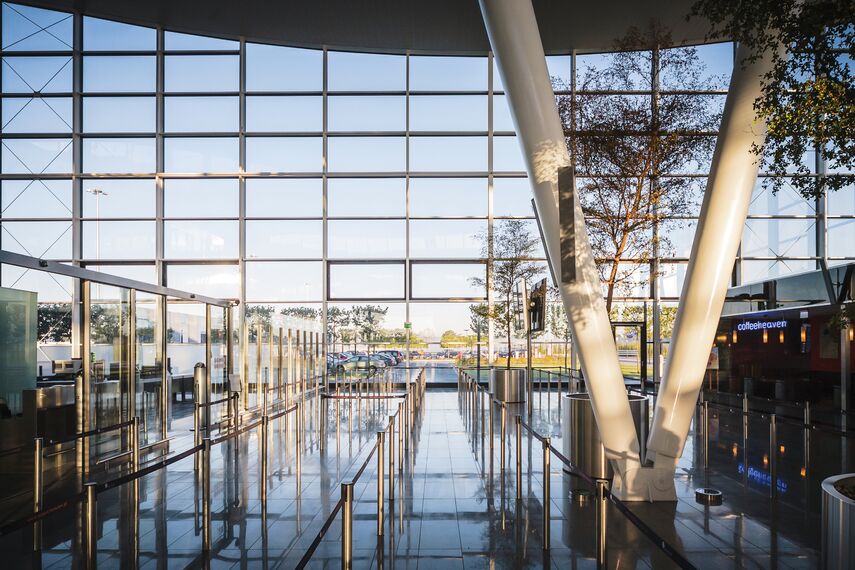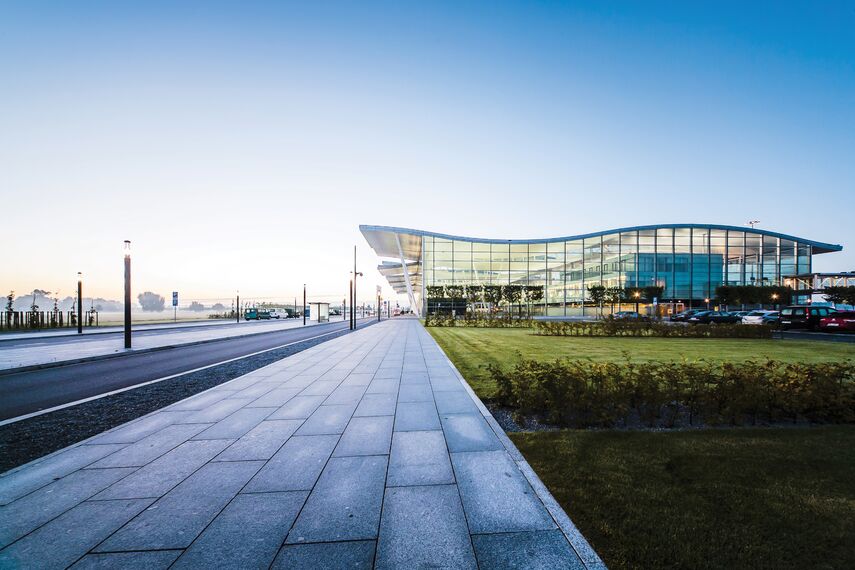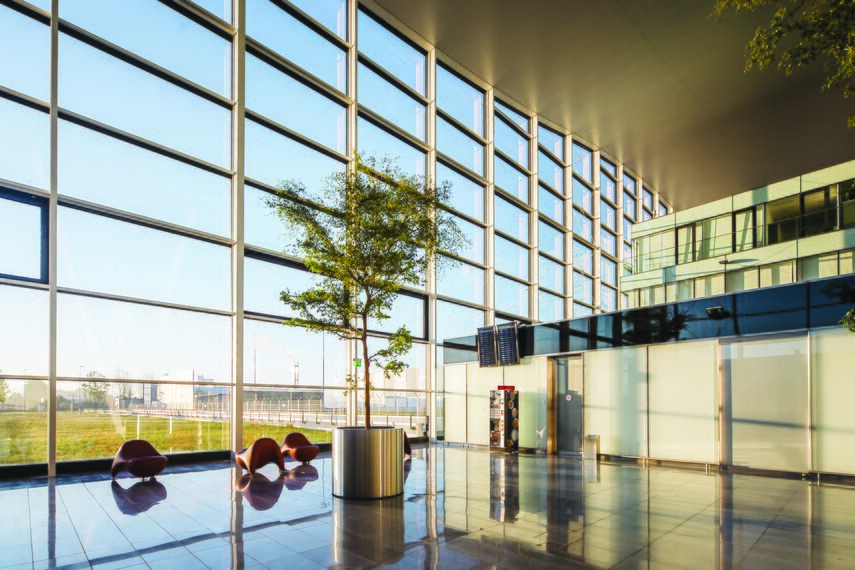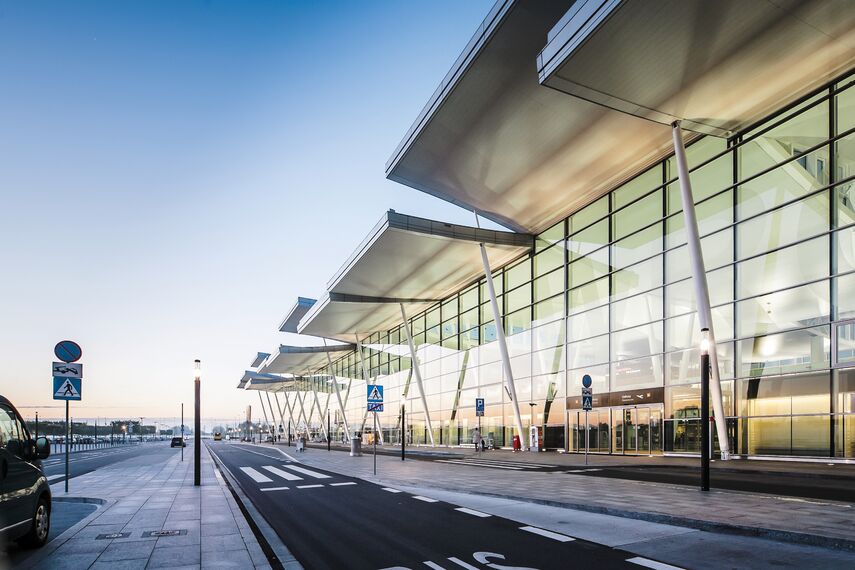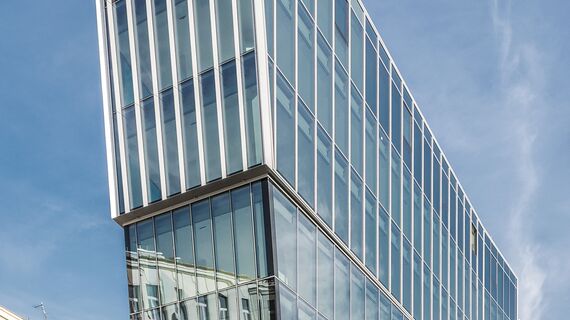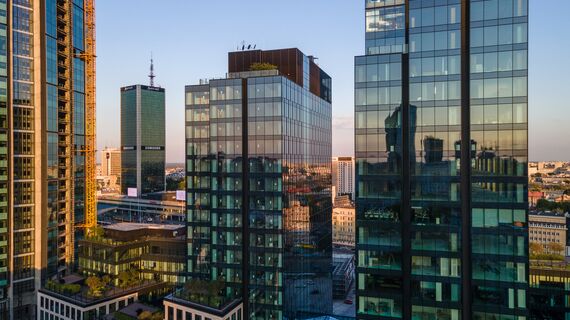- JSK Architektci Sp. Z o.o.
MPL Passenger Terminal
There is no doubt that the EURO 2012 Football Championships greatly accelerated infrastructural investment in Poland. The country wanted to improve its transport infrastructure in every possible area: road, rail, and air. A number of new motorways, express roads and ring roads were built, improvements were made to railway lines and stations and some new airports were constructed. The airport in Wrocław is one of these: it was designed by the Polish branch of the German architects JSK Architekten, working together with Altro Projekt as the designers of the façade. The new design replaced the old-fashioned and cramped terminal constructed in the early 1990s.
Maximising the feeling of space within the property, this system allows every room a view across the bay and easy access to a terrace that encapsulates the building’s rear elevation. Once in place, the aluminium frames would provide a robust solution which provides the strength and stability required for large expanses of glazing, while delivering required pascal ratings to resolutely stand up to enduring winds and harsh coastal conditions.
Complete with a lift-and-slide mechanism – whereby the aluminium sliding door is raised up before moving across the rails – the glazing solution provides additional sealing and locking options, enhancing performance and security. Supplied in RAL 9007, the grey aluminium perfectly complements the building, while pre-anodized paint adds further durability to protect the property from the elements.
Jon Capel, architect at Harrison Sutton Partnership, who designed the Salcombe cliff-side property, added: “No matter where you stand in this stunning home, there are unobstructed views across the bay. To perfectly capture those by connecting the inside and outside worlds, without compromising the building’s ability to handle the unpredictable conditions of coastal life, our selection of glazing materials was critical. “Having specified Reynaers’ products on previous projects, we were confident in the ability of their aluminium systems to provide the robustness and durability needed in this environment. Its profiles were also in keeping with the contemporary look and feel of this building, giving it a unique identity.”
For this project, specifying aluminium to achieve the architectural ambition of the project facilitated more than aesthetic excellence. Steve Cooling, Managing Director at Aspect Windows said: “Limited access to the property via tight turns and steep slopes meant the size and weight of materials was a key consideration on this project, both during initial installation and where ongoing maintenance is concerned. Utilising systems from Reynaers meant we could overcome these challenges, while also ensuring the solutions would help the property to stand up to the demands of its seaside environment.”
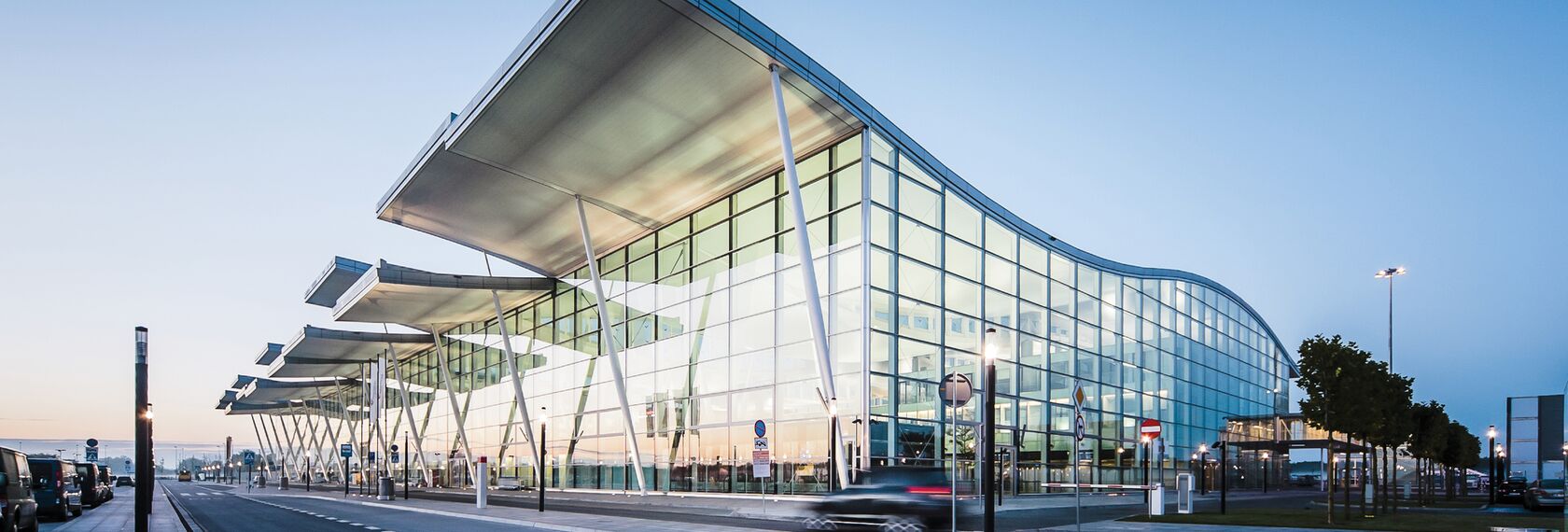
The movement is expressed by thirteen wave-like roof sections
Construction
This structure, which in effect is a new airport, is a highly rational building constructed almost exclusively using ninety-degree angles and 15-metre modular sections. The external structure, which is tall, glazed, and crowned by an irregular steel roof, measures about 200 x 80 metres and can be extended at the sides. This simply provides a watertight covering for all the elements required for the functioning of the airport and which are laid out inside the building on several levels. Neither the open public spaces nor the smaller areas that are grouped together reach the roof, which appears to flow over the smaller volumes suspended inside. Its thirteen wave-like sections join in the middle and then separate and in this way create slits that become windows providing additional light for the spaces below. The architects organised the functioning of the building in a linear manner, greeting people arriving from the city with an entrance area that goes right up to the winglike roof sections and extends the entire length of the building, while the last that departing passengers see of the structure is a building on many levels that includes controlled areas inside it. On top, there is a public terrace for friends and family. The most spectacular space in the whole building is the area that greets passengers when they arrive. This is covered by the roof which appears to bend in different directions and is supported on ‘V’ shaped steel pillars, adorned with tall plants and, most importantly, it provides comfortable access to every function that is required to serve departing or arriving passengers.
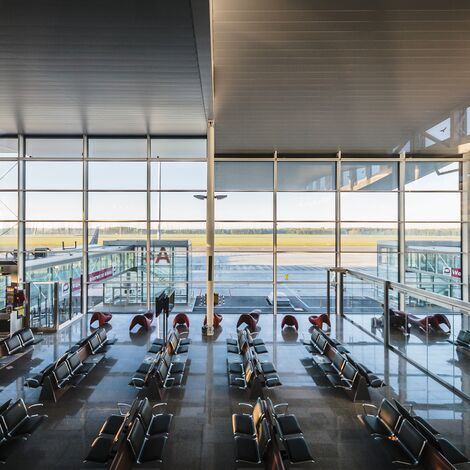
The comfortable waiting-area is light and transparent
Smoke evacuation windows
Everything is finished in high-quality materials, including granite, clear and frosted glass, stainless steel and sheets covered in wood veneers – and bathed in light entering through the entire glazed facade. The statistics are impressive: 11,500 m2 of glass with the highest possible parameters for transparency and thermal insulation were imported from Germany. The whole was installed in a transom and mullion construction system where the mullions are set 3.75 m apart, the transoms are 1.750 m apart and both profiles were produced in a non-standard 65 mm visible width. The glass sheets were inserted into this frame. Typically, each glass panel weighed 310 kg. CS 77 inward opening windows that had been laboratory tested earlier were inserted in a number of locations in order to provide ventilation for the main airport area. The dimensions of the opening windows were the same as a typical glass section. The whole aluminium construction of the elevation was fixed to the steel construction of the terminal building using aluminium brackets.
Ambitions
The new terminal certainly provides a dignified expression for the ambitions of Wrocław, which was one of the four host cities for EURO 2012, the European City of Culture in 2016 and a runner-up for the global EXPO. It has also satisfied the ever-increasing travel requirements of Polish people, as a comfortable airport not just for international and national carriers, but also for the highly popular low-cost airlines. With its excellent connections with Wrocław city centre, it will underline the importance of this city on the European aviation map.
Used systems
- ConceptSystem 77
- ConceptSystem 59Pa
Involved stakeholders
Architect
- JSK Architektci Sp. Z o.o.
Fabricator
- Opal Grodzisk
Photographer
- Jarosław Ceborski
Other stakeholder
- Airport Wroclaw S.A. (Investors)
- Hochtief Polska - Hochtief Construction (General contractors)
- Roman Rutkowski (Authors)

